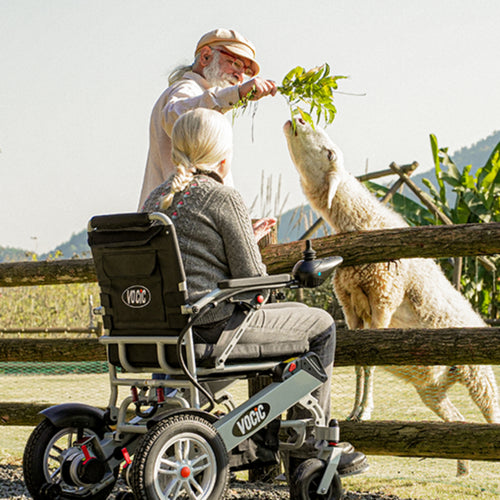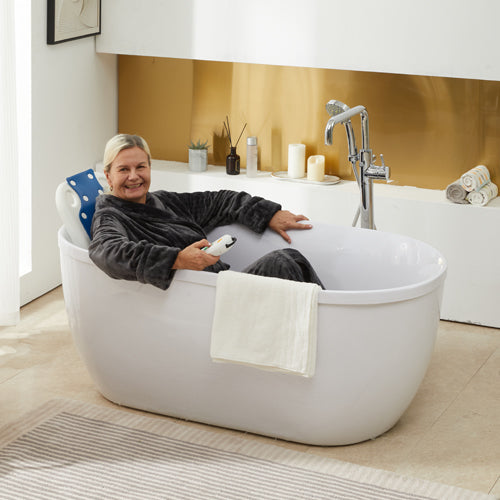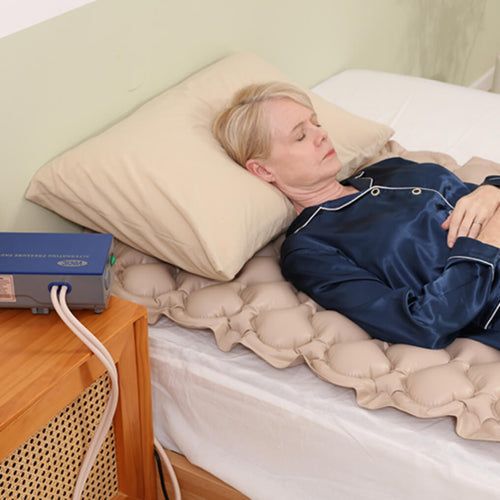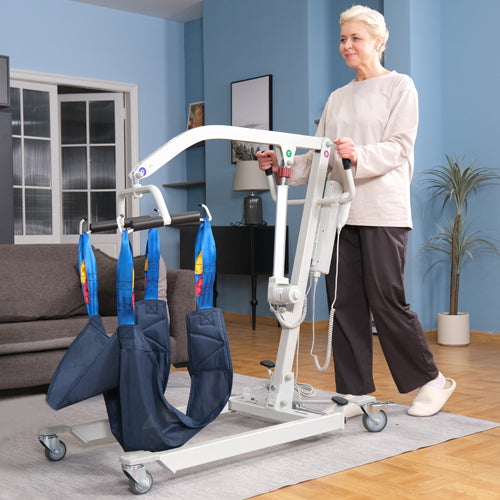For wheelchair users, going to the toilet is a private and essential daily activity, but it can also bring some challenges. Below, we will learn about the methods, auxiliary tools, and precautions that can help them go to the toilet so that wheelchair users can more easily meet their toileting needs and enable them to use the toilet safely and independently.
How Do Wheelchair Users Go to the Toilet?
As a wheelchair user, there are a number of methods you can use to access the toilet that can improve your mobility and bathroom accessibility.
Use of Accessible Restrooms
Many public and private facilities have accessible toilets designed for wheelchair users. They are spacious for easy maneuvering and are equipped with grab bars, higher toilet seats, and ample space to approach the toilet directly or from the side.
Assistance from Caregivers
You may need assistance from a caregiver to use the toilet. This can range from partial support, such as stabilizing your body or helping with dressing, to full assistance, including lifting and positioning on the toilet.
Portable Commodes
You can also use a portable toilet, which can be placed next to your bed or in a convenient location. Portable toilets can be used as stand-alone commode chairs or placed directly on a traditional toilet to make transfers easier.
Transfer Benches and Boards
If you are able to move independently, you can use a transfer bench or transfer board to bridge the gap between your wheelchair and the toilet. You can slide from your wheelchair onto the toilet, reducing the need for lifting.
Adaptive Equipment
A variety of adaptive tools, such as a raised toilet seat, toilet seat riser, or automatic toilet lift, can help you transfer more easily and maintain your independence.
Catheters and Ostomy Bags
If you can't use the bathroom for medical reasons, or if using the bathroom is extremely difficult, you can use a catheter or wear an ostomy bag, which collects waste into a bag attached to your body.

What Difficulties a Wheelchair User May Face When Using the Toilet?
Wheelchair users encounter a range of obstacles when using the bathroom, especially if the bathroom isn’t specifically adapted to their needs. Here are some common difficulties:
-
Limited Space: Many restrooms are too narrow to comfortably accommodate a wheelchair, making it difficult to position yourself close enough to the toilet for a safe transfer.
-
Height Difference: Standard toilets don’t match the height of wheelchairs, complicating transfers. Raised toilet seats can help but aren’t always available, especially in public restrooms.
-
Lack of Support Bars: Properly placed grab bars are essential for your safe transfer, but many restrooms lack them or are improperly installed, increasing your risk of falling.
-
Inaccessible Public Restrooms: Despite accessibility laws, many public restrooms still don’t meet your needs, lacking adequate space, appropriate grab bars, and enough privacy.
-
Hygiene Challenges: Maintaining personal hygiene while sitting can be particularly challenging for you, especially without the necessary tools and amenities.
What Tools Can Help Disabled People Use the Toilet?
Numerous tools and adaptations can make it easier for wheelchair users to use the toilet independently:
-
Grab Bars: Strategically placed grab bars on either side of the toilet offer support for wheelchair users when transferring or adjusting positions. These bars can be mounted on walls or come in freestanding forms for added stability.
-
Transfer Boards: These sliding boards help users move from the wheelchair to the toilet seat with minimal lifting, providing a smooth transfer for those with limited lower body mobility.
-
Raised Toilet Seats: Adding a raised seat to the toilet helps reduce the distance a user has to lower themselves. Raised seats are often adjustable and provide more comfort, especially when combined with grab bars.
-
Portable Commode Chairs: These chairs are especially helpful in homes where bathroom space is limited or not fully accessible. They are equipped with wheels, allowing users to roll over the toilet without requiring a transfer, or can serve as bedside commodes if needed.
-
Bidets and Hygiene Aids: Bidet attachments or handheld bidet sprayers make it easier to maintain personal hygiene from a seated position. Long-handled wipes or reachers can also assist with cleaning in a way that reduces strain.
-
Accessible Toilets in Public Facilities: Family or companion restrooms, which are larger than standard restrooms, provide additional space and often include adaptive tools that help wheelchair users and their caregivers.
What Wheelchairs Can Make It Easier for Disabled People to Use the Toilet?
Space-Tilt Wheelchair
This wheelchair allows you to recline, helping you position and reduce pressure points, especially if you have limited mobility or need additional postural support. The tilt mechanism also distributes your weight evenly, preventing skin breakdown and improving comfort during long periods of sitting.
Shower/Toilet Wheelchair
These specialized wheelchairs are waterproof and designed to be used in the shower and over the toilet. Some models also come with a removable seat, allowing you to easily roll directly over the toilet for seamless access. Plus, their corrosion-resistant materials ensure durability and hygiene, allowing you to use them in wet environments.
Power Wheelchair with Adjustable Seat
These power wheelchairs are different from manual wheelchairs. Motorized wheelchairs come with seats that can be adjusted in height or tilt, making it easier to transfer to toilets at different heights. This feature is particularly useful if you are taller or shorter, providing a customized fit that enhances your independence and safety in different bathroom settings.
Folding or Portable Wheelchair
If you travel frequently, a foldable, lightweight wheelchair can be useful. They are easy to transport and can be used easily in less spacious spaces. Like VOCIC’s V62 Folding Portable Power Wheelchair, they have a quick-release mechanism that simplifies the folding and unfolding process, making them ideal for car travel and storage.

What to Pay Attention to When Helping a Wheelchair User Use the Toilet?
When assisting a wheelchair user in the restroom, it is recommended to prioritize their comfort, privacy, and safety. Here are some guidelines:
-
Respect Privacy and Maintain Clear Communication: Always communicate with the individual to understand their preferences and comfort level. Let them guide the process, as they know what works best for their needs.
-
Use Proper Lifting and Transfer Techniques: When assisting with transfers, ensure you use safe lifting techniques to avoid injury. If the user needs to be lifted, consider using a transfer board or patient lift to reduce strain.
-
Be Mindful of Hygiene Needs: Hygiene can be a sensitive subject, so approach it with care. Using adaptive tools like bidets or hygiene reachers can allow the user to handle as much of the process as they’re comfortable with.
-
Ensure Accessibility of Bathroom Tools: Make sure grab bars, transfer aids, or hygiene tools are within reach. Adjust items as needed to create a safe environment, and check that the wheelchair is securely locked during any transfer.
-
Provide Stability and Support: Throughout the process, provide a stable base of support, whether through holding onto the user securely or ensuring they can grip a grab bar. Move slowly, allowing the user time to adjust and maintain their balance.
Conclusion
For wheelchair users, bathroom needs can be made easier with specialist equipment such as shower/commode chairs, grab bars, and raised toilet seats. These tools, combined with caregiver support, not only increase your safety, independence, and comfort in the bathroom but also ensure you have dignity and ease in your daily hygiene routines.
Related Reading: A Comprehensive Guide to United Airlines' Wheelchair Assistance Services









